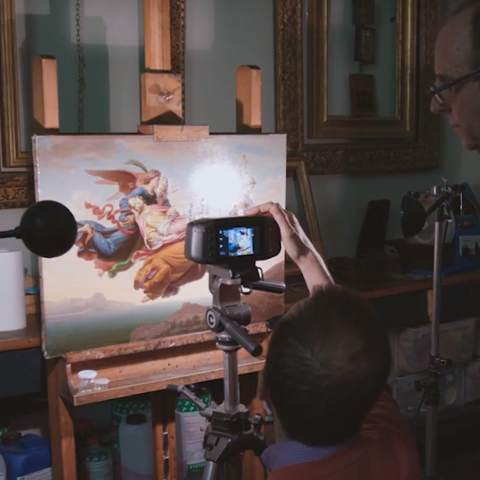
Preservation of cultural inheritance like paintings, manuscripts, maps and old photos through documenting and transforming to digital form for archives, research, conservation or for display is increasing remarkably. Museum laboratories and university researchers use a wider range of analytical instruments to study collections. There is a need to study, for example, materials like pigments, dyes and binding media. These are not only to observe possible degradation or changes due to ageing or environmental conditions but also to reveal the artist’s painting technique and methods used in the work of art.
Hyperspectral imaging (HSI) is gaining wide acceptance as one of the most valuable optical tools for art archiving and restoration. As a non-invasive and non-destructive imaging technique, HSI is safe for even the most fragile samples. It is used remotely to scan all parts of the sample with a high spatial resolution (down to 15 µm pixel size). HSI records both spatial and spectral information, which can be used to classify the chemical, physical and/or biological properties of the object.
In the visible range, it gives improved precision in colour measurement for recording pigment colour-change, which is essential for conservation. In the near infrared, the information hidden behind the outer layer or written text that has deteriorated and faded under environmental conditions may be revealed. Besides, fluorescence investigation is prone to highlight different solvent and binders.

Painting being examined with a Specim HSI camera.
Case study: Monet’s painting confirmed genuine by using Specim’s hyperspectral camera
The 1891 work A Haystack in the Evening Sun was found to be a genuine piece of Claude Monet’s work by researchers of the RECENART project in the University of Jyväskylä. The research team revealed a layer of paint over Monet’s signature, and year of the oil painting by using a hyperspectral camera developed and produced by SPECIM.
The painting had been owned by the Gösta Serlachius Fine Arts Foundation since the 1950s but it had not been authenticated so far because the signature is covered by paint.
The work was examined at the University in the Recenart (Research Centre for Art) multidisciplinary project in Mänttä. The study used the hyperspectral camera with an XRF device, which tells of the work’s elemental composition.
Case study: Altamira 4.0: hyperspectral analysis of the Paleolithic Sistine Chapel
The Altamira cave is located in Santillana del Mar (Cantabria, Spain) and was included in 1985 in the UNESCO World Heritage List. It is known as the Upper Palaeolithic Sistine Chapel for its famous Polychrome Ceiling and the significance of its Palaeolithic cave art.
Many images invisible to the human eye are preserved on the walls of the Altamira cave. It is possible to recover them for the knowledge of rock art and for science through the use of photogrammetry techniques and terrestrial hyperspectral remote sensing in the work of documentation of cave art.
Imaging spectrography (or hyperspectral remote sensing) makes it possible to detect areas in the cave where the rock has absorbed chemical elements that made up the pigments with which images that are no longer seen were painted. This is one of the lines of research that the Altamira Museum is currently working on and through which hitherto unknown images of Altamira art will be discovered. The work team used the Specim IQ portable hyperspectral camera for its analysis, which is capable of quickly and reliably identifying the chemical composition of pigments in situ.

